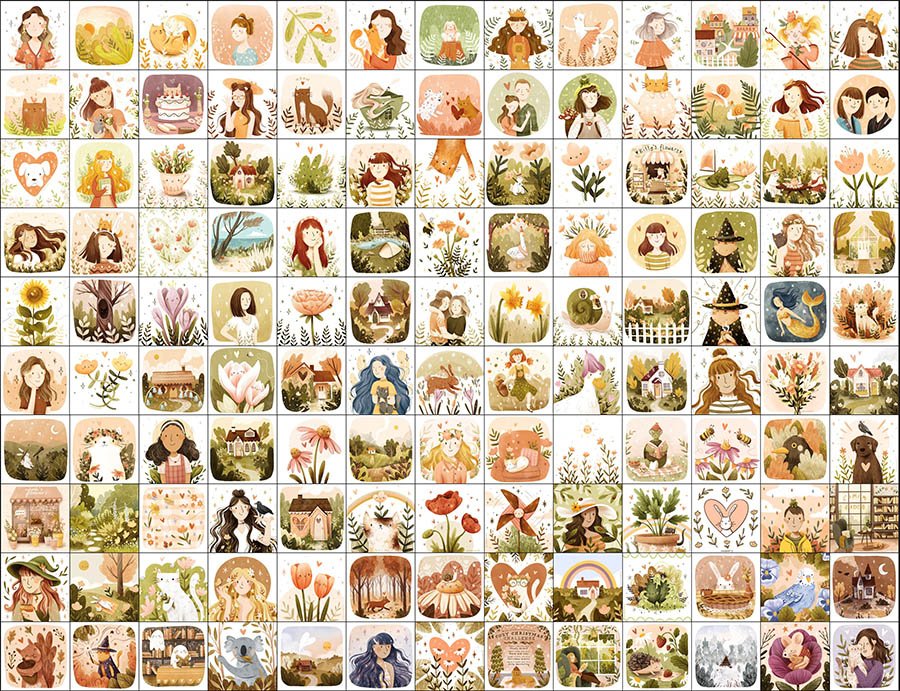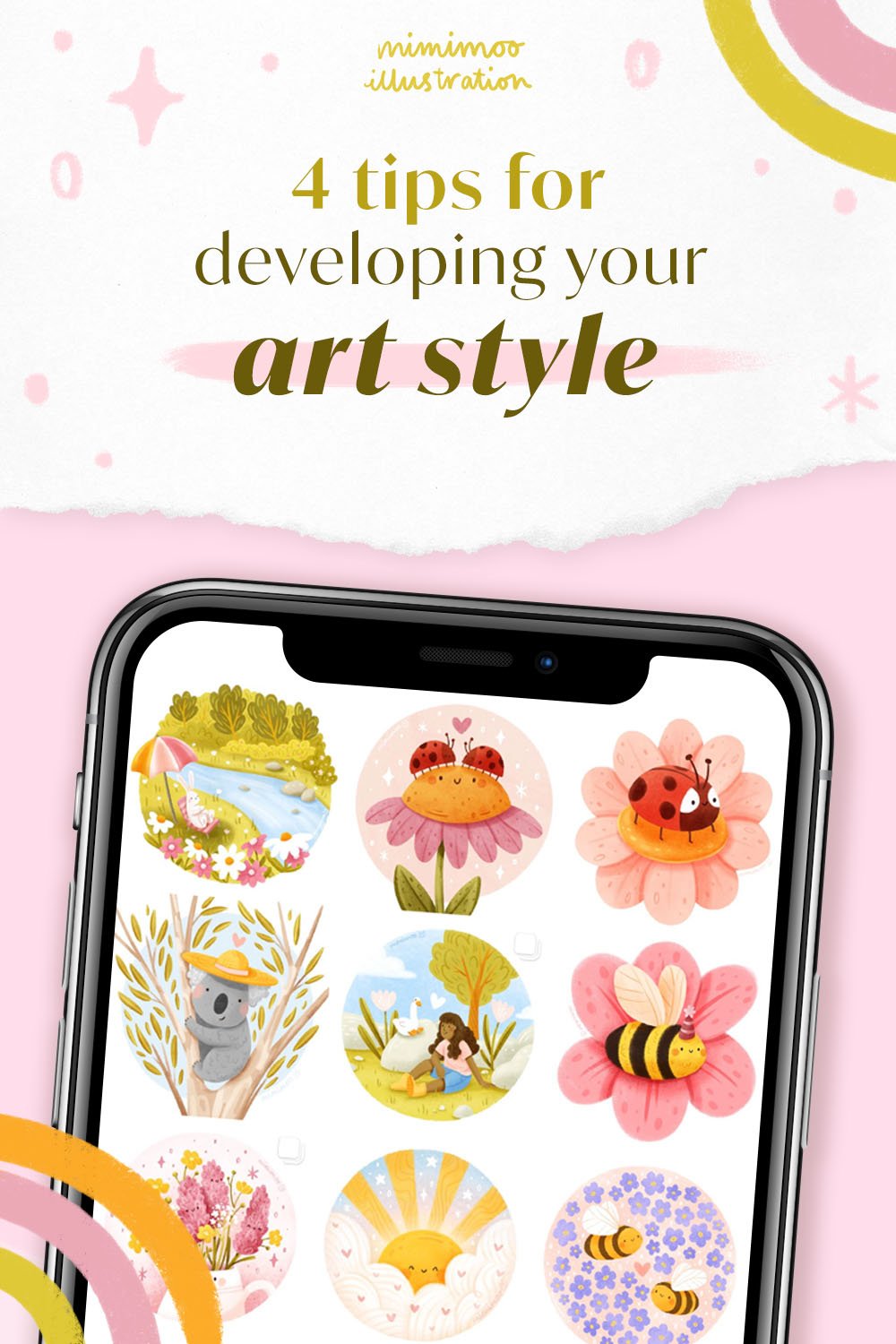4 Tips for Developing Your Art Style as a Digital Artist … and 1 Shortcut
Developing and understanding your art style is something that a lot of artists want to achieve because it can help you define your craft, and it can be really useful in creating a brand if you’re wanting a career as an artist. So, I’m here to share 4 handy tips (and 1 cheeky shortcut) I’ve learned in my time as a self-taught digital artist!
Remember though that you can also just focus on creating the art you want to make, so don’t feel pressured to nail down your style if you don’t want to!
Tip #1 – Start small
We all wish we could start drawing like our favourite experienced artists right away. The keyword here though is experienced. Chances are they’ve spent years developing their art style, so if you’re just starting out it can be a good idea to aim a little smaller to begin with.
When I decided I wanted to learn digital art I didn't yet have the technical skills I needed to draw how I wanted to, but what I could do is use any skills and resources I already had to start developing my art style! I had a colour palette that I liked to use, and techniques and tools that I could use to help my art feel cohesive, helping other people identify that the same artist had drawn them.
I started out drawing super simple things until my technical skills developed enough to illustrate the things I wanted to, and as my skills developed, so did my art style!
Think of your art skills right now as the first step in the development of your dream style. Don’t be discouraged if you’re starting from square one, because we all start small and grow with practice.
Tip #2 – Draw A LOT
We learn and grow as artists by doing and practising, so if you’re wanting to develop your art style then draw as much as you have time for! Make drawing and creating an integral part of your lifestyle, because the more you draw, the more opportunities you have to learn new skills, new techniques, and what you personally do and don’t like.
It’s not about being good, and it’s fine if you’d rather nobody ever see your early weird, not-quite-right creations but remember, you learn more from these than you do from the beautiful pieces that turn out just right.
To develop my own digital art style, I had to remove the expectation that everything I drew was going to be very good. Embrace the journey of drawing and get excited for all the things you learn along the way! Drawing every day and being ok when things looked a bit silly was an important part of my process for learning to draw the way I wanted to because drawing often means there’s always another opportunity coming soon to draw something you like even better.
Tip #3 – Try new things
Challenge yourself. Get out of your creative comfort zone by consistently drawing new things so you can find who you are as an artist. Yes, it can be scary but we’re all on a learning journey so embrace the unknowns and explore something that’s new to you because to me, that’s where the real treasure can be found!
You could join drawing challenges, take on random prompts, try using colours that you’ve never used before - there are lots of ways to challenge your creative practice. When I was first starting out, I joined lots of drawing challenges on Instagram which was a great way of trying new things and seeing what other people had drawn in their own unique styles.
A key takeaway is don’t be afraid to experiment with things like brush sets, drawing with or without outlines, different characters or backgrounds, new colours, or compositions you’ve never tried before!
Tip #4 – Find brushes you really like
A crucial part of any digital artist’s toolkit is the brushes they use so it’s important to find brushes you enjoy and feel comfortable using. Your digital art software should come with some free brushes already installed which is a great way to get you started. Many artists also like to create their own brushes then make them available for other artists to buy and use like I’ve done with my two texture brush packs.
The brushes you use will really impact the overall look and feel of your art and they will influence how you draw so it’s a good idea to try lots of different brushes. Once you’ve found a selection you like working with and start using these consistently, you’ll see your distinct art style start to develop before your eyes!
Cheeky Shortcut
If you’re wanting to speed up the process of looking like you have a strong art style to the outside world, then I have a cheeky shortcut that can help.
Choosing a particular colour palette, brush set, or theme for all your public facing art will help your art portfolio feel more cohesive. While this contradicts a lot of what I said earlier about experimenting and challenging yourself, these things can still happen but by simply keeping just one or two key things consistent across your art, it’ll bring your collection together immediately.
I used to use the same small set of colours for most of my art, even though I was still figuring out what my art style was, and by changing things slowly over time meant that even though all my drawings were different they all felt like they belonged together. Using a distinct colour palette was effective for me but perhaps sticking to a particular theme might work well for you like creating witchy, magical illustrations using a limited palette, or maybe you could draw plants and flowers using the same brush set. Keeping just a couple of elements consistent across your portfolio will allow your art to become more recognisable as you develop the rest of your style.
Follow me on Instagram to see how my art style has developed throughout my journey as a digital artist.
4 Tips for Developing Your Art Style as a Digital Artist … and 1 Shortcut
Start small
Draw a lot
Try new things
Find brushes you really like
Check Out My Latest Youtube Video!











